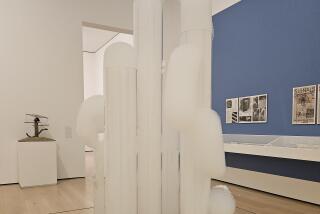Elizabeth Turk’s illuminating social sculpture will light up a beach with 1,000 glowing umbrellas
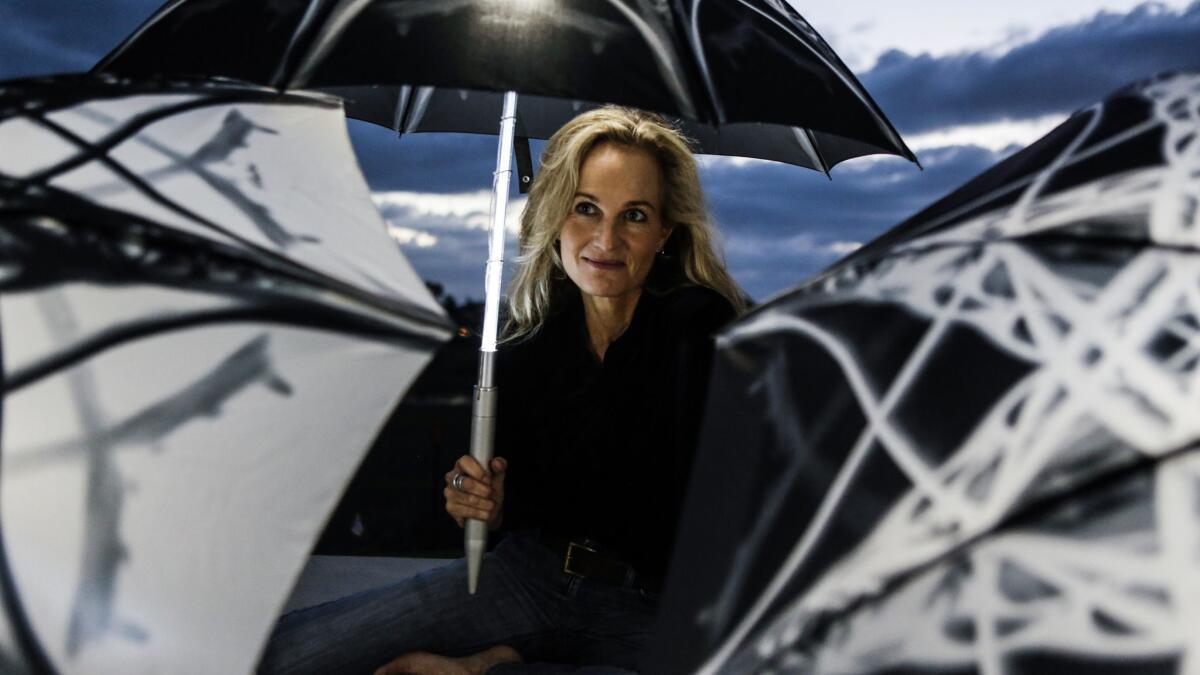
Inside Elizabeth Turk‚Äôs airy, sunlit studio overlooking the back bay in Newport Beach, the artist is hard at work on her latest creation, ‚ÄúThe Shoreline Project.‚ÄĚ
At the moment, work means playing with umbrellas.
Turk and Laura Siapin, her project manager, are opening and closing an oversize umbrella emblazoned with a haunting, geometric image on the top. Barefoot and giddy with excitement, they lift it and turn it sideways. They tilt it and tip it, careful to avoid stacks of standard-size, similarly decorated umbrellas piled neatly on a blanket on the floor. The smaller black and white umbrellas are equipped with LED lights so when switched on, the image is illuminated: a seashell X-ray mandala.
On Nov. 3, Turk’s Shoreline Project will come to life as 1,000 volunteers from the community gather at Laguna’s Main Beach at twilight, outfitted with the umbrellas as they move along the shore to create a living, breathing work of art. Loosely guided by Lara Wilson’s Assembly Dance company and other dance partners, participants are free to walk, dance, jump, chase waves or just stand still while drones film the mass of moving, lighted mandala umbrellas from above as the sun sets. The movie will be on view at the Laguna Art Museum later this year.
In Buddhist tradition, mandalas are geometric designs meant to represent a perfectly balanced universe. These intricate images are painstakingly created in total silence, then almost immediately dismantled. It’s an apt metaphor for Turk’s eagerly anticipated foray into environmental performance art.
‚ÄúI think of this as quiet art,‚ÄĚ she says. ‚ÄúI want it to be quiet and fragile and trumpet things that are the opposite of the ‚Äėnoise‚Äô we‚Äôre experiencing now in the world.‚ÄĚ
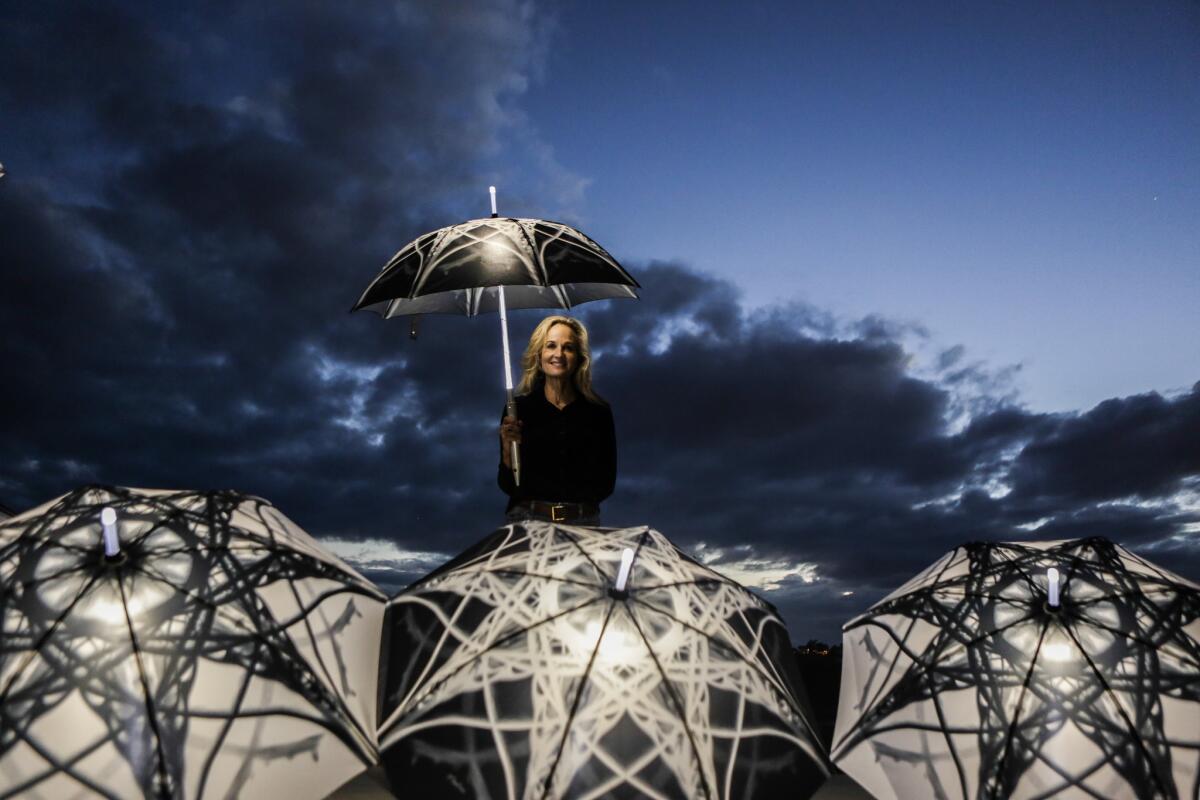
Museum Director Malcolm Warner commissioned Turk as part of the institution’s annual Art & Nature festival, which includes a major outdoor art installation. The museum has previously commissioned works by such artists as Laddie John Dill, Lita Albuquerque and Phillip K. Smith III, but Turk’s may be the most ambitious yet.
The ‚ÄúShoreline Project‚ÄĚ is the highlight of the four-day event, which also includes a family festival, panel discussions, screening of a documentary on land artist Andy Goldsworthy and a keynote lecture on Charles Darwin and his views on art.
‚ÄúSince we‚Äôve been putting on this festival in 2013, we‚Äôve sensed that all across the country, even internationally, there‚Äôs an increasing interest in art‚Äôs engagement with nature,‚ÄĚ Warner says. ‚ÄúFor contemporary artists, it seems like an important issue, because of environmental concerns. Climate change and man‚Äôs relationship with nature have come to the front of people‚Äôs minds in recent years. That‚Äôs a great thing for our festival, because it has a special and growing relevance right now.‚ÄĚ
Most of my work is about pushing to the edge, pushing a structure in a repeating form to its end, until just before the point that it breaks.
— Elizabeth Turk
For Warner, Turk was a natural choice. The museum presented a solo exhibition of her work in 2015 that included the delicate marble sculptures she is best known for, as well as her more recent seashell mandala artwork, which uses X-ray photography methods to expose the interior structure of shells.
‚ÄúShe‚Äôs an artist very much in touch with the materiality of nature,‚ÄĚ Warner says.
Turk, 56, made her name creating gravity-defying marble sculptures, carved from heavy blocks into rippled ribbons, delicate pinwheels, geometric cages and intricate lace collars. Her sculptures are part of the permanent collection of the Los Angeles County Museum of Art, the Mint Museum in North Carolina and the National Museum of Women in the Arts in Washington, D.C.
‚ÄúMost of my work is about pushing to the edge, pushing a structure in a repeating form to its end, until just before the point that it breaks,‚ÄĚ Turk says. ‚ÄúFor instance, with stone, you think that it is really heavy and solid and internal, but if you take away almost all that stone so it‚Äôs just a single line or a tiny single structure, the emptiness will describe the ‚Äėwhat was.‚Äô‚ÄĚ
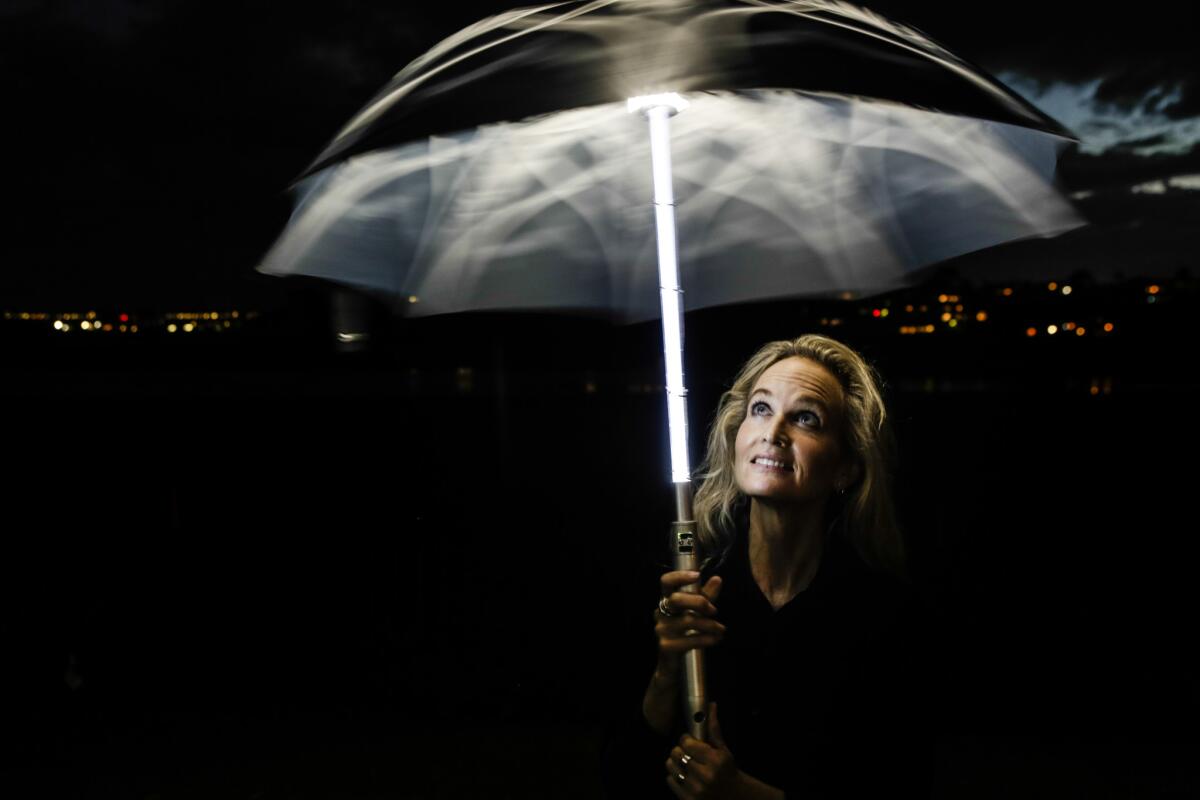
Born and raised in Southern California, Turk originally studied international relations at Scripps College with an eye toward entering politics. ‚ÄúArt was a place I loved to go to escape ‚ÄĒ like reading,‚ÄĚ she says. ‚ÄúI never thought I would make a living as an artist; I thought of it more as a passion.‚ÄĚ
While working in Washington, D.C., in a ‚Äúlowly, I‚Äôll-run-and-do-anything-that-the-campaign-needs‚ÄĚ job, Turk started making small bronze figurative pieces that she would ‚Äútry to sell to anybody who walked into the office.‚ÄĚ Eventually, she quit her job and got a master‚Äôs degree from the Rinehart School of Sculpture at the Maryland Institute College of Art in Baltimore. From there, she moved to New York and began working as an artist full time.
Turk says her life changed after she was awarded the prestigious MacArthur Fellowship, often referred to as the ‚Äúgenius grant.‚ÄĚ She received the news while on a road trip in 2010. ‚ÄúThey said, ‚ÄėI understand you‚Äôre driving across the country,‚Äô and you think, ‚ÄėWho is on the phone that knows that? You don‚Äôt recognize the number.‚Äô Then they say, ‚ÄėIf you‚Äôre behind the wheel, you should probably pull over,‚Äô‚ÄĚ she recalls, laughing.
A year later, she was awarded a Smithsonian Artist Research Fellowship. At the Smithsonian, she studied calcium carbonate and mineral structures and began experimenting with X-rays of seashells and deep-sea coral that would eventually become the focus of her mandala series and the ‚ÄúShoreline Project.‚ÄĚ
‚ÄúThe imagery was just so beautiful. I wanted to keep pushing it forward,‚ÄĚ she says. ‚ÄúI just didn‚Äôt think we would eventually be managing 1,000 people.‚ÄĚ
I want it to be quiet and fragile and trumpet things that are the opposite of the ‚Äėnoise‚Äô we‚Äôre experiencing now in the world.
— Elizabeth Turk
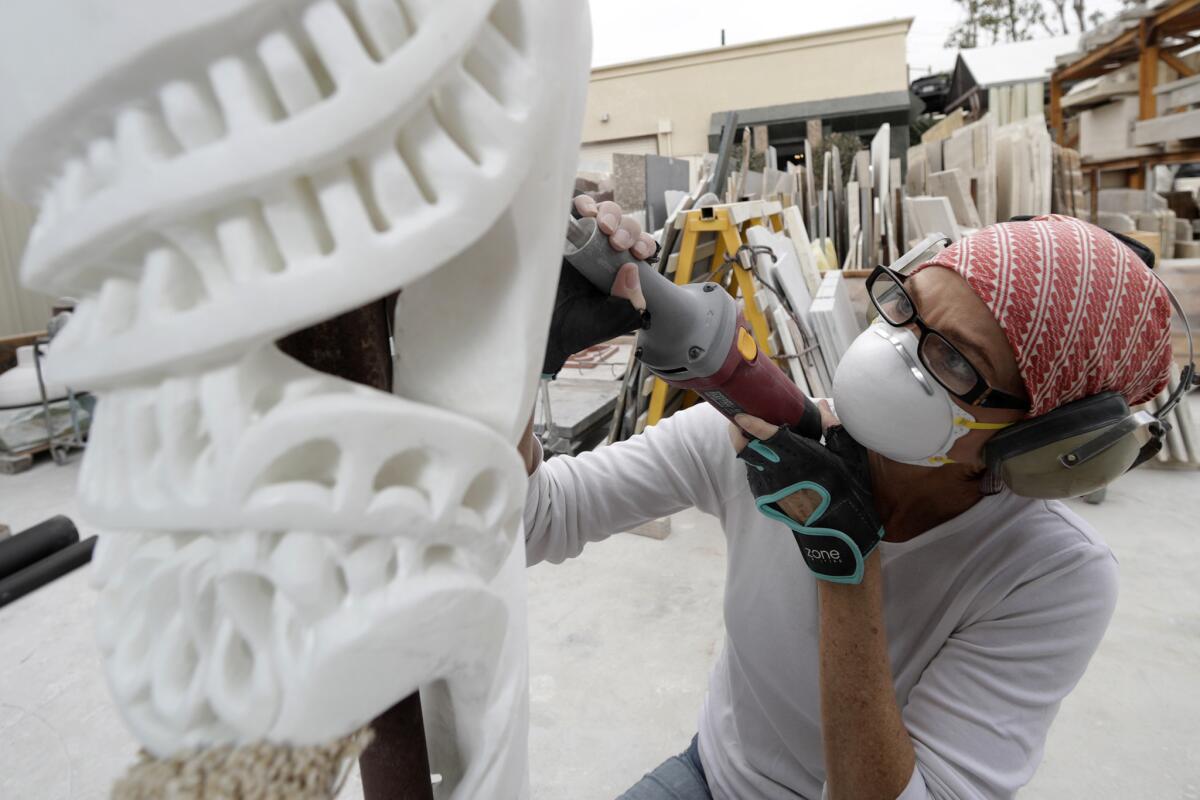
When Warner approached her with the commission in early 2017, Turk was ready to hit the ground running. She and Siapin had recently brainstormed a number of ideas for projects and thought one might work for the museum. ‚ÄúI wanted to create experience-oriented art that integrated art, science and nature,‚ÄĚ Turk says.
Turk knew she wanted to incorporate the mandala but wasn‚Äôt immediately sure how. She toyed with the idea of an enormous structure with a mandala printed on it that people could walk through. Or maybe something involving windmills or tents? Then one night, she and Warner were having drinks at the Royal Hawaiian restaurant in Laguna Beach. ‚ÄúHe had a really funny drink that had an umbrella on a toothpick in it, and I said, ‚ÄėHey, I have an idea for the project,‚Äô‚ÄĚ Turk recalls, bursting into laughter. ‚ÄúAs Malcolm would probably say, it got all ‚ÄėTurk-ed up‚Äô from there.‚ÄĚ
From the start, Turk envisioned a work that would bring together communities at a time when divisive politics and world events threaten to rip them apart.
‚ÄúThe context of our time pushed the idea of creating intimate bridges. Creating a large, shared experience became really important,‚ÄĚ Turk says. ‚ÄúThe seashell, the umbrella ‚ÄĒ everything is based on these really basic things that every human has experienced. It‚Äôs commonality we can agree on.‚ÄĚ
At the same time, she wanted to make sure the process was accessible, so people wouldn‚Äôt be intimidated by any notions of high-brow art. ‚ÄúThat‚Äôs why it‚Äôs an umbrella. It‚Äôs so low-maintenance,‚ÄĚ Turk says. ‚ÄúWe‚Äôre trying to make art really approachable so the doorway is open to everybody.‚ÄĚ
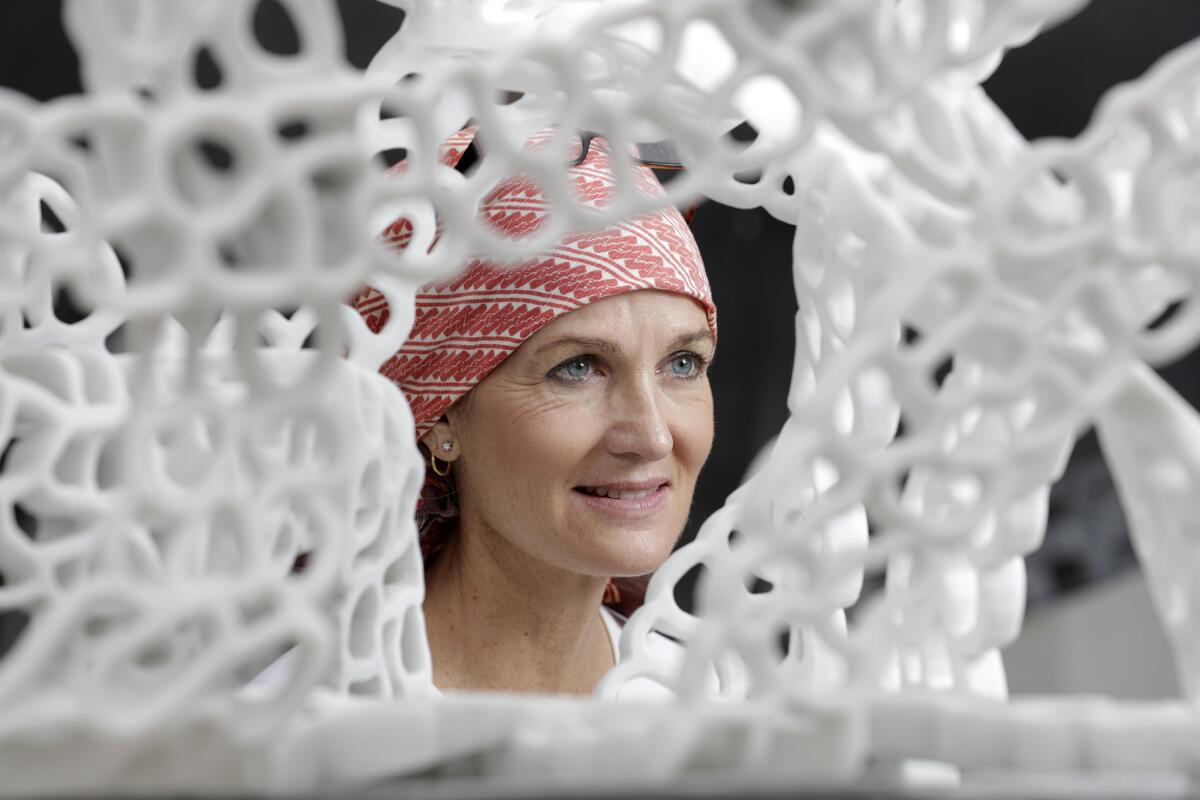
After the idea was settled on, there were many details to work out. For example, the umbrellas went through five prototypes and numerous considerations: choosing a mandala design, sampling various fabric weights for the canopy, testing lighting units and light arcs, and trying out different shapes for the stem and handle. At one point, a solar-powered umbrella was even considered.
To ensure that the public became involved in the creative process, Turk set up a ‚Äúthink lab‚ÄĚ at SCAPE gallery in Corona del Mar to illustrate the scope and details of the project. Starting with an empty space, the gallery began to fill up with drawings, images and maquettes for visitors to view and offer suggestions. ‚ÄúWe created a framework, and everyone was invited in to just develop the concept and make it real,‚ÄĚ Turk says.
Turk and Siapin have spent months mapping the shoreline, researching crowd movement and potential crowd size, observing light patterns at twilight, testing batteries, determining parking and clocking the amount of time it will take to distribute umbrellas. The result, Turk jokes, will be ‚Äúmanaged chaos.‚ÄĚ
During several small-scale tests, Turk and Siapin observed how people engaged with the umbrellas. ‚ÄúWith children, you give them the umbrella, and they‚Äôre happy and they‚Äôre running around dancing,‚ÄĚ Siapin says. ‚ÄúWith people in their late 20s to mid-40s, they open the umbrella and kind of look around, like, ‚ÄėWho is looking at me?‚Äô They have this strange, awkward moment, and after about 10 minutes, you see them dancing. And then you‚Äôll have the next demographic, and they want to follow rules. They‚Äôre very respectful of the umbrella.‚ÄĚ
Turk hopes the dancers, who will kick off the evening with a brief, choreographed performance, will inspire participants to mimic their movements or create their own paths. ‚ÄúIt‚Äôs definitely not going to be a Busby Berkeley water ballet,‚ÄĚ Turk says, grinning.
Armed with information they’ve already gathered and lessons they’ll pick up from the upcoming event, Turk and Siapin plan to replicate the project in other coastal cities. But for now, the team is working nonstop on the logistics of the ambitious project. Hundreds of volunteers, including students from the Laguna College of Art and Design, will be enlisted to guide participants and help make the event run smoothly.
Those interested in taking part in the umbrella performance must register on the ‚ÄúShoreline Project‚ÄĚ website. Participants will be required to sign a waiver that they are encouraged to print out in advance to speed the process. The signed waiver will serve as a ‚Äúticket,‚ÄĚ with the 1,000 umbrellas handed out to ticketholders on a first-come, first-serve basis. To reinforce the concept of community, everyone is encouraged to wear black, so no one stands out.
The next milestone will be a full rehearsal, minus the drones, on Oct. 22.
‚ÄúWe‚Äôre setting a beautiful stage, and then we‚Äôll see what happens,‚ÄĚ Turk says. ‚ÄúWhatever happens, happens.‚ÄĚ
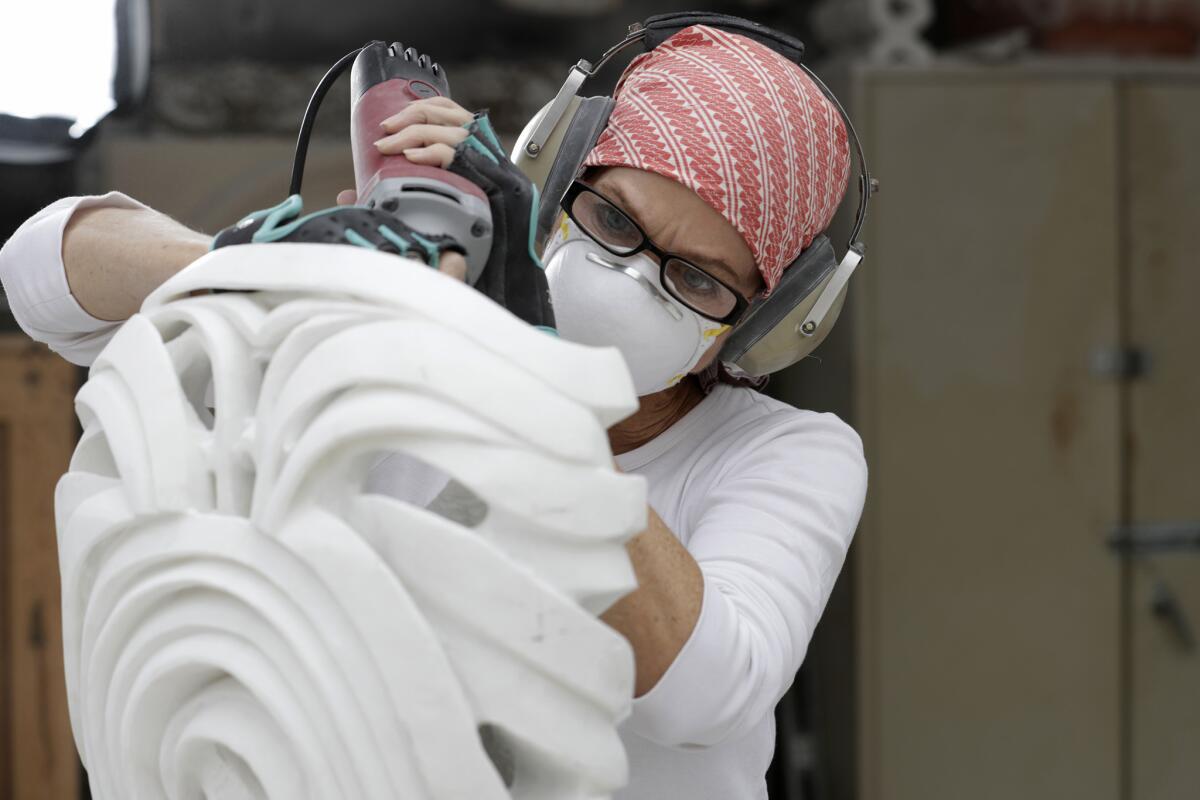
‚ÄėThe Shoreline Project‚Äô
Where: Main Beach in Laguna Beach
When: Nov. 3
Arrival time: At 5 p.m., umbrellas will be dispersed on a first-come, first-serve basis to ticketholders who have completed a signed waiver
Start time: At 5:45 p.m., dancers will begin a brief performance to kick off the event
Parking: Limited street parking. Shuttle service will be provided from various locations
Cost: Free To register or for more information, go to: www.shoreline-project.com or www.lagunaartmuseum.org
More to Read
The biggest entertainment stories
Get our big stories about Hollywood, film, television, music, arts, culture and more right in your inbox as soon as they publish.
You may occasionally receive promotional content from the Los Angeles Times.


